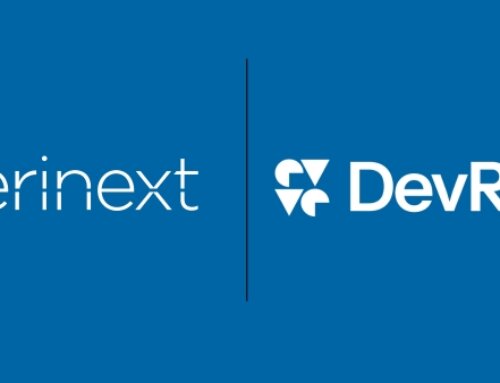Within the infinitely changing characteristics of cybersecurity, keeping your organization safe from emerging threats can feel like an uphill battle. Cybercriminals are constantly finding new ways to exploit weaknesses, and one of the most common ways they gain access to systems is through unpatched vulnerabilities. Despite the known risks, many organizations struggle with implementing comprehensive patch management strategies.
But why is patch management so critical, and how can businesses stay ahead of these risks without overwhelming their IT teams? Let’s explore the importance of a solid patch management process and how leveraging managed services can free your team from the burdens of continuous patching while enhancing your security posture.
What is Patch Management?
Patch management is the process of acquiring, testing, and applying updates to software and systems to address known vulnerabilities or improve functionality. These updates—commonly referred to as “patches”—are released by vendors to fix bugs or security flaws that malicious actors could otherwise exploit.
Every device and piece of software your organization uses—from operating systems like Windows and macOS to productivity apps and security tools—must be updated to prevent weaknesses. When patches are ignored or applied too late, organizations expose themselves to security breaches, data loss, and regulatory fines.
Why Is Patch Management So Important?
- Security Against Cyber Threats: Threat attackers constantly search for vulnerabilities in commonly used software and operating systems. Once a weakness is discovered, they then develop exploits to infiltrate systems. Cybersecurity experts advise applying patches as soon as they are released to prevent attackers from taking advantage of these vulnerabilities. Delaying or missing patches opens your organization to attack, often resulting in downtime, lost data, or financial penalties.
- Compliance and Regulatory Requirements: Many industries require businesses to follow specific cybersecurity guidelines, which often include timely patch management. Failure to comply can lead to steep fines and reputational damage. Maintaining up-to-date software and systems is key to staying compliant with data protection regulations like GDPR, HIPAA, and PCI-DSS.
- Operational Stability: While security is often the primary driver for patching, patches also fix bugs that impact system performance. Unpatched systems may experience downtime or operational inefficiencies that slow down your business. Keeping software updated ensures smooth functionality, minimizes disruptions, and helps your business remain productive.
- Maintaining Customer Trust: In an era where data breaches are headline news, customers are more aware than ever of the importance of cybersecurity. Businesses that demonstrate their commitment to protecting sensitive data—such as financial information or personal details—are more likely to build lasting trust with their clients. On the other hand, a breach due to unpatched vulnerabilities can erode customer confidence.
Challenges of In-House Patch Management
Despite patch management’s critical role in securing your systems, many organizations struggle to keep up with the patching demands. A few key challenges include:
- Volume of Updates: Software vendors release patches frequently, and IT teams may find it challenging to keep up with the sheer volume of updates required. Even missing a few patches could lead to severe vulnerabilities.
- Time and Resource Constraints: Applying patches is time-consuming. IT teams are often pulled in multiple directions, and staying on top of patching can divert valuable resources away from higher-priority tasks, such as digital transformation projects or other business-critical initiatives.
- Complexity of Testing and Deployment: Not all patches are created equal. Some patches can inadvertently disrupt business processes or introduce new issues into the environment. These varied patches make testing before deployment essential.
How Verinext’s Patch & Protect Managed Services Can Help
Verinext Patch & Protect offers a comprehensive solution designed to address the challenges of in-house patch management while ensuring your organization remains secure. By leveraging a managed service, your business can streamline the patching process and allow your IT team to focus on more strategic initiatives.
Here’s how Patch & Protect works:
- End-to-End Patch Management: We handle your organization’s entire patch management lifecycle. From monitoring for new patches to testing and deploying them across your systems, our team ensures that your devices remain secure and up to date.
- Continuous Monitoring: Cyber threats don’t take breaks, and neither do we. Our 24/7 monitoring service keeps an eye on your endpoints, identifying vulnerabilities and applying patches as soon as they’re available. This proactive approach reduces the likelihood of a breach.
- Compliance and Visibility: Verinext’s Patch & Protect service provides detailed reporting, giving you complete visibility into your patch compliance status across all endpoints. You’ll receive monthly compliance reports outlining each device’s status, helping you maintain compliance with industry regulations.
- Dynamic Device Discovery: Unmanaged or unknown devices connecting to your network can introduce significant risks. Our service identifies agent deployment gaps to bring all your assets under control.
- Expert Guidance: In addition to our automated services, you’ll have access to expert security professionals who can offer guidance, conduct quarterly architecture reviews, and provide strategic recommendations based on your organization’s evolving needs.
- Scalable Solution: Whether you’re a small business or a large enterprise, Patch & Protect is designed to scale with your needs. Our flexible service ensures that as your organization grows, so does your patch management capacity.
Are you ready to offload the burden of patch management and focus on what matters most to your business? Contact us today to learn how Patch & Protect patch management software can streamline your patching process, improve your security posture, and free your IT team to tackle more strategic initiatives.
Related Posts:
Strengthening Your Network: Ensuring Resilience with Managed Secure Networking
DR Journal: Preparing for the Worst: How DRaaS Can Save Your Business






